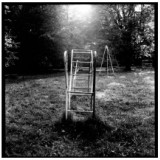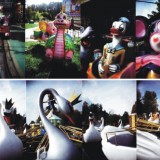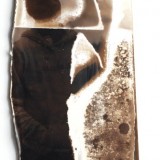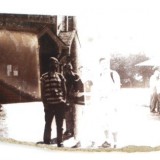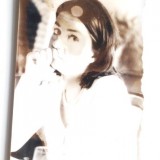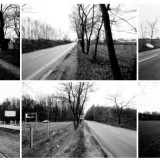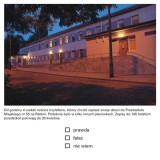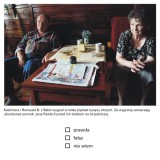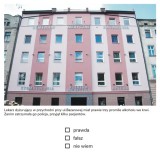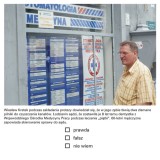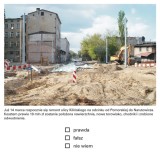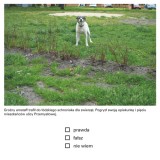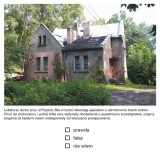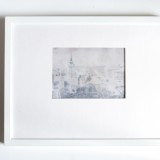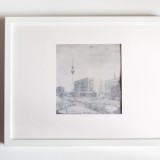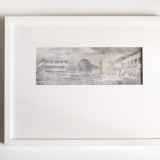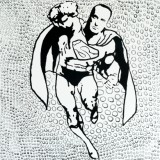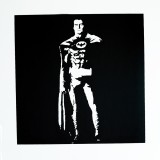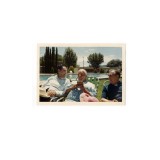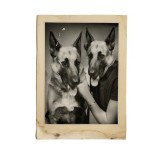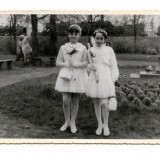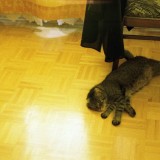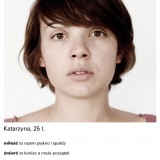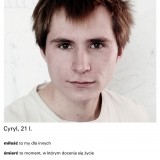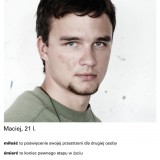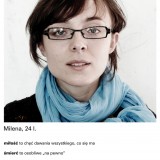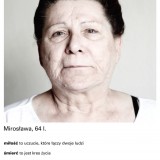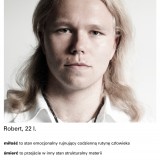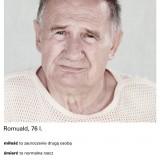Maciej Bohdanowicz
Maciej Bohdanowicz (born 1984). Graduated from the Department of Visual Education (currently of Visual Arts) within the Academy of Fine Arts in Łódź, where he is currently an assistant professor in the studio of drawing. He creates artworks using the media of photography, painting and drawing. Photography for him is the main medium to research and describe surrounding reality. His work series are the result of a reflection upon the contemporary role and possibilities of photography. The artist poses the question to what extent does the photography document and to what extent does it create reality. One may recognise a few trends within his approach to photography: “sentimental”, nostalgic, post-conceptual and also works based on irony and mystification.
The black-and-white photographs entitled Health which present a playground for kids in a Park “Na Zdrowiu” [On Health] have a nostalgic character. Objects such as a carousel, climbing frames, a slide and swings are emphasised using a soft light. On the photos there are no children, there is no one. Strengthening of the chiaroscuro contrasts and at the same time a slight mist on the image, causes it to look unreal, as if it was from another, inaccessible world. In the series Amusement Park we are also faced with a reality possibly recalled from memories or maybe dreams. In seemingly idyllic photos showing Mickey Mouse, a swan, Donald Duck revolving around the carousel and inviting us for a ride there is something which causes us to be anxious. As Marta Wlazeł wrote about that series: “I guess one should not get in. The gates to childhood, idealised by the selectiveness of our memories, latched long ago and only sometimes open slightly to lure with a colourful model railroad...”
The inspiration to create the series Emanations (2008) was the working with analogue photography. In the time of digital photography, tangible contact with photographic material becomes something uncommon. This is accompanied by the uncertainty of the effect and the intended result sometimes is preceded with many attempts in the shape of exposed scraps of photographic paper. The fragments of photos “left on their own” in the photographic darkroom start to live their own life. Taken out of the developing fluid, laid one on top of the other, prematurely made to “look older”, they achieve a specific poetry.
Echoes of conceptual experiences, especially medialism are found in the work Border. This is a series of black and white photos, in which the artist contrasted different fragments of landscape with each other. The border could be tracks, a road or a horizon. On every photo the border looks different, and where it exactly runs depends on the artist and on our feelings. Bohdanowicz contrasted 44 photos from the series with the dictionary definition of the word “border”: the end of physical or psychological possibilities of a man.
In the series Original / Copy (2010) which consisted of 95 photographs he photographed a workers’ housing complex in Czech Zlin. All buildings look almost identical, which was strengthened by photographing them from an identical point of view. The housing complex was built before the war according to the rules of modernist architecture by Tomasz Bata for the workers from his factory. Bohdanowicz’s photographs show reality overlapping the utopian avant-garde ideas, reflected in a sense of both the historical changes and the everyday lives of the inhabitants of the neighbourhood.
In the series Eros-Thanatos the artist touches existential issues. He does this in a very simple, almost banal way. He asked his friends what love or death is and he contrasts the responses with a photo of the person who gave the answer. Under the photo there is also thefirst name and age of the respondent. Is this a work which is strong with its simple message or does it smite us with its banality and obviousness? Or maybe ambivalence causes us to react emotionally?
In the work entitled The alphabet of a week he undertook a game with photography placed in the press. Bohdanowicz recalled here a typology of functions of the signatures under photographs proposed by Clive Scott – a signature as an explanation, as a starting point and as a parallel commentary. In press photos we deal with a third kind of relationship in which a commentary may deal with an event documented by a photo included, but not with the photo itself. The artist says: “We endow the text which accompanies a photograph with a credit of trust which is unverifiable. The signatures worded in a certain way give the impression of honesty, but at the same time they often mask what is really going on in the photo. They discourage us from asking questions. (…). I presented a form of multiple choice questions on the boards with the photo and text. So each photograph and signature had three possible responses – true, false, I don’t know. The viewer’s task was to decide if the photograph and its signature are true. Or at least probable.”
In the series Polish Birds: Extinct Species, Postcards from another country, Freaks and Truth the artist winks at the viewer and at the same time is checking our perceptiveness. These are small works which cause us to look at them briefly, because our eyes are more used to watching gigantic advertisements where we don’t have to search for anything, strain our eyes or intellect because everything is served to us “on a tray”. The work Polish Birds… looks like a yellowish page from an old album with drawings od birds. There are also their Latin names. If the work was examined by an ornoitologist, he/she would notice that . there are no such species and there never have been. The series Freaks (2011) shows people in various “genre scenes”. Seemingly there is nothing extraordinary about them, but with a closer look we notice that an elegantly dressed woman is in fact a man and the photo of a young couple in fact shows two women…
Bohdanowicz is also an author of works in which he confronts the history of art and more precisely the 20th century avant-garde with his own everyday life and art. In the work R.Mutt 1917 he photographed and assembled together the photos of urinals. The photographs refer to the famous Fountain by Marcel Duchamp – a urinal exhibited in a gallery as a work of art. In his paintings Super heroes, the images of Kazimierz Malewicz and Władysław Strzemiński are painted in the pop-culture convention of Batman and shown against the background of works which were fundamental for the ideas of these artists – the black square on a white background or a unistic image. Here a question arises: did the artist Bohdanowicz want to enter them into popculture by painting the representatives of abstractionism as cartoon figures? Do we have to simplify the message and adjust it to the media mechanisms and the standards of so called “average viewer” if we want our ideas to be understood or at least taken into account?
Maciej Bohdanowicz in his projects asks questions about our perception of the world, about the relationships between our private experience of reality and that which is suggested by media, ideology and our education system. Are we able to recognise it at all?
Anka Leśniak


